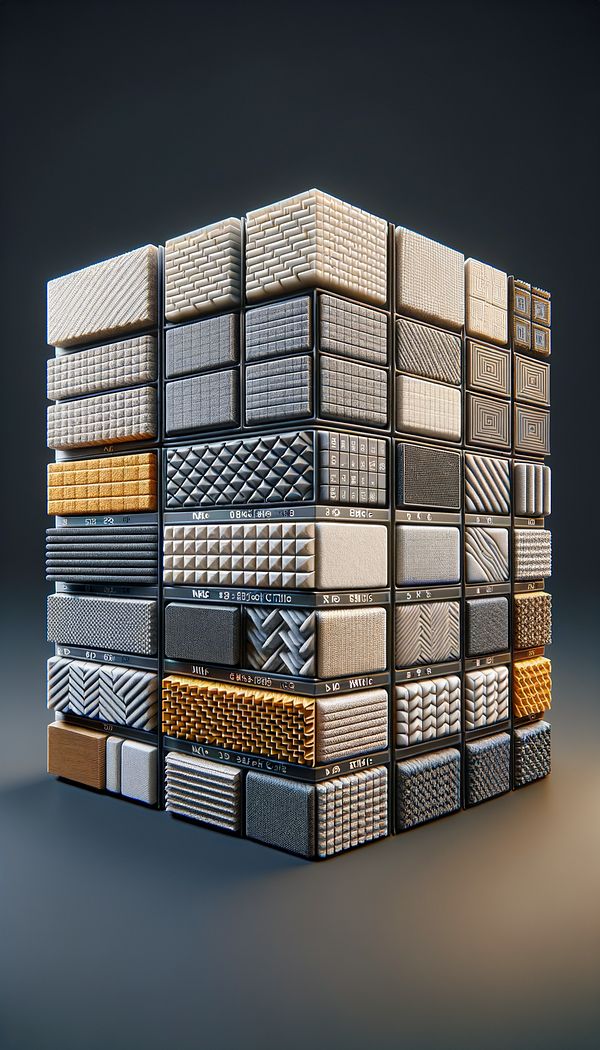What is NRC - Noise Reduction Coefficient?
NRC is a standard measure to indicate how much sound an acoustic material can absorb.
Description
NRC, or Noise Reduction Coefficient, is a key metric used in the realm of acoustic design and interior design to help assess the sound-absorbing characteristics of various materials. Expressed as a number between 0 and 1, the NRC provides a simplified gauge of a material's ability to absorb sound, with 0 indicating no absorption (complete reflection of sound) and 1 indicating complete absorption. This coefficient is particularly useful for interior designers and architects when selecting materials intended to improve room acoustics by reducing noise levels.
Materials enriched with a high NRC rating are often incorporated into spaces where sound quality and control are crucial, such as recording studios, theaters, lecture halls, and even office environments that seek to minimize distracting noise. The NRC value is determined through standardized testing, measuring the material's acoustic properties across a range of frequencies typically encountered in interior environments. It's worth noting that while the NRC offers a broad overview of a material's sound absorption efficiency, it may not fully represent performance across all frequencies.
For a more comprehensive sound absorption strategy, professionals may consider integrating materials with varying NRC ratings or employ additional acoustic solutions such as sound diffusers and bass traps. The integration of high-NRC materials in design plans contributes not only to auditory comfort but also to creating functionally and esthetically pleasing spaces.
Usage
When designing a new office space, an interior designer may choose ceiling tiles with a high NRC rating to reduce the travel of sound between cubicles, improving privacy and reducing distractions. Similarly, in a high-end restaurant, wall coverings and carpets with high NRC values may be selected to create a quieter, more intimate dining atmosphere, enhancing the customer experience.
FAQs
-
Does a high NRC rating mean a material is soundproof?
No, a high NRC rating indicates good sound absorption, not soundproofing. Materials that absorb sound well reduce noise levels within a space, but soundproofing involves preventing sound from entering or leaving a room.
-
Can the NRC of a material vary based on its installation?
Yes, the NRC can vary depending on how a material is installed. For example, a material suspended with an air gap behind it may absorb more sound compared to when it's mounted directly to a surface.
-
Is NRC relevant for all types of interior spaces?
While NRC is particularly critical in spaces where sound control is vital, understanding and using materials with appropriate NRC values can enhance comfort and acoustic quality in a wide range of interior environments, from homes to commercial spaces.
Practical Application
Incorporating materials with appropriate NRC ratings is crucial in spaces where sound quality or noise control is a priority. To start, professionals should familiarize themselves with the NRC values of commonly used materials and consider how these materials can be combined or augmented with other acoustic solutions to achieve the desired sound absorption. Understanding the specific needs of the space and consulting with acoustic experts can further refine the selection and application of these materials.
-
Architectural Elements199 articles
-
Design Styles478 articles
-
Technical Terms38 articles
-
Materials & Textiles360 articles
-
Construction & Building86 articles
-
BailBail refers to a type of handle or pull on drawers, cabinets, or furniture.
-
CamelbackA camelback is a high, rising curve on a piece of furniture that resembles the shape of a camel's hump.
-
Bidirectional FlowBidirectional flow in interior design refers to the two-way movement within a space, allowing for efficient circulation and interaction.
-
French RenaissanceFrench Renaissance refers to a period of rebirth in French art and architecture, emulating classical forms with a focus on symmetry and proportion.
-
Biophilic DesignBiophilic Design is an approach to architecture and interior design that seeks to connect building occupants more closely to nature.
